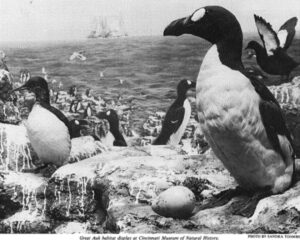During the autumn and winter months, perhaps you can catch a glimpse of “ice eggs” or “ice balls.” This is a rare phenomenon you can see along the coastlines of the American Great Lakes, beaches in Finland, Siberia, Germany, Estonia, Sweden, and a few other spots in the Northern Hemisphere.

Ice eggs on Hailuoto Island. Photo: Risto Mattila
Formation
Ice eggs are often mistaken for hail and they share a few similarities. Hail comes from the turbulent environment found within a cumulonimbus cloud. It forms when water droplets in the cumulonimbus cloud are forced upwards into the colder parts of the atmosphere, causing them to freeze and create a tiny hailstone. The hailstone grows in size, accumulating multiple layers as more water droplets smash into and freeze over.
Ice eggs are made of several layers of ice. When it snows and temperatures are freezing, ice sheets form in water. Because of wind and waves, pieces of the ice sheet break off and become snow sludge or bigger, more solid pieces.
These pieces of ice start to stick together and the ebb and flow of the sea or lake gently toss and roll them around. Thus, they form a single ball of ice which begins to grow. It accumulates layers as layers of water freeze over the surface of the ball. The movement of the waves then molds it into its characteristic round shape.

Bigger boulders among the smaller eggs. Photo: Risto Mattila
Eventually, they make their way to the shoreline, in the thousands they can stretch for several kilometers on a coastline. The beach transforms into a field of ice balls. Eggs roll up to the shoreline accompanied by a dark, icy sludge.
The eggs vary in size, ranging from the size of a golf ball to large boulders one meter in diameter. The color also varies, some are transparent, white, grey, or brown. The color changes are because of impurities in the water, dirt, or dark-colored sand.
A rare phenomenon
While hail is commonplace, ice eggs are rare. According to ice specialist Jouni Vianio from the Finnish Meteorological Institute, conditions have to be perfect for ice eggs to form. The eggs appear every few years depending on the weather. According to Vianio, temperatures must be slightly below zero, the coastline must have a gentle slope, the water must be calm with a light swell, and the wind must blow in a particular direction.
But these perfect conditions have aligned a few times in the last decade. In 2016, ice eggs formed on a beach near the Siberian village of Nyda. In 2019, eggs washed up on Hailuoto Island in Finland. In 2020, they appeared on a beach in Holland State Park on Lake Michigan. It is unclear how long the eggs last.
Below is a video of ice eggs rolling onto the shore of Lake Michigan.






